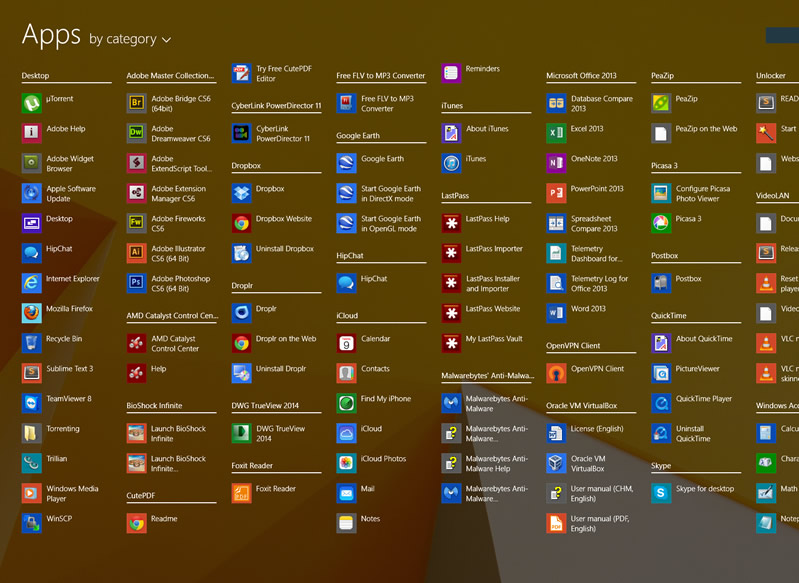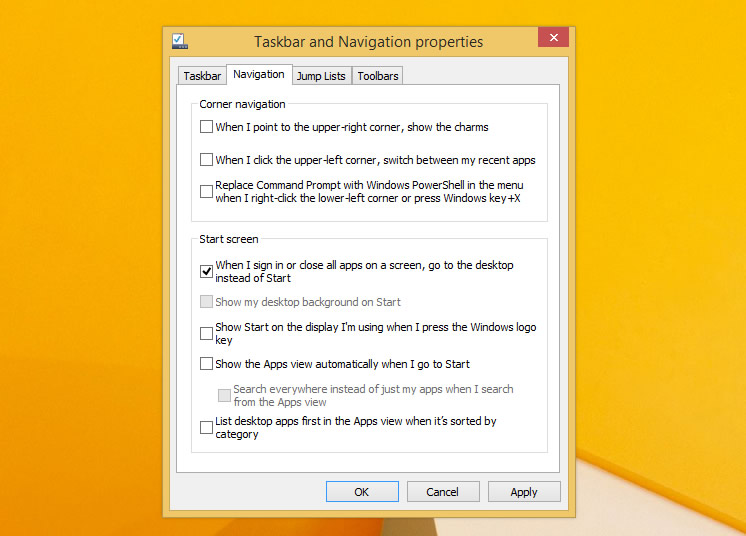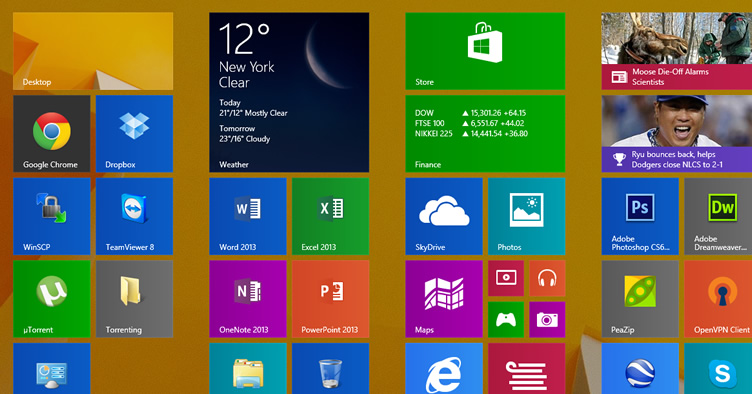Not unlike previous releases of Microsoft's ubiquitous desktop OS, Windows 8 has faced a lot of scrutiny in the year it's been available. Every time the company has made a drastic change to Windows, it's been on the losing end of user opinion. Windows 8 has been no different.
Microsoft found itself in a bind after the launch of Windows 7. Struggling for relevance in the mobile sector, the company attempted to fill the void in its portfolio by adding a touch-friendly UI layer over the Windows desktop. However, Metro came with a myriad of issues and complaints, mostly because of poor choices in usability design – part of what we've been hoping Microsoft will fix in Windows 8.1. And it has, somewhat.
Despite that and the fact that a single-year turnaround for any kind of Windows iteration is quick for the folks at Redmond, we're not sure if it's enough to please detractors. Before installing the free upgrade next Thursday, let's review what's been improved and what's still missing.
When I reviewed Windows 8 I criticized its broken down search, as it didn't make sense to separate documents from settings if search was meant to be used as a keyboard launcher. Windows 8.1 fixes this with universal search that works well most of the time, including some semantic search capabilities (queries don't need to be keyword-exact). However if you've used OS X, you'll note that Mac maintains its upper hand with more seamless and useful results. For example, OS X can remember your preference of a previous query and make that result more prominent in future searches with less keystrokes.

As you've read dozens of times by now, it's just the button, not the menu, though the handy right-click menu with power user settings and shortcuts is still present. Returning the Start button is a positive change and works best when you configure the Start screen with your most used apps and shortcuts. However...
While the addition of smaller and bigger tiles enhances the overall experience compared to what we got in Windows 8, the Start Screen still can't be manipulated fluidly if you wish to add, move or remove tiles. Newly installed programs are not added to Start automatically, which can be both good and bad, but without proper integration of Start and desktop apps, interaction between the two remains broken.
Microsoft's answer to the divorce between desktop apps and Start tiles is the "All programs" screen which I find horrible to browse because it's cluttered with countless redundant shortcuts for help files, uninstallers, readmes and other nonsense. It feels like you're scrolling through every single shortcut from your old Programs menu.

It's a shame Microsoft doesn't make this the default setting as it represents a major improvement in the way Metro and the desktop blend together. The "modern" UI was forced into Windows 8 and that's why a lot of people have avoided the OS. The design languages are very different and making them co-exist amicably is something Microsoft hasn't figured out entirely, but the wallpaper integration alone makes 8.1 worth installing. Bonus: the ugly flower wallpaper is no longer the default.
Thank you, Microsoft. You now get the option to boot directly to the desktop, even if it's not a prominent setting, it's accesible from the taskbar properties. Hot corners can be disabled which makes sense if you are a desktop power user with multiple monitors. The change helps you forget about Metro if you don't want to see it. But...

Personally, I've disabled all hot corners but Charms. I also hate Charms, or rather I find them irrelevant to my workflow. A welcomed improvement would have been to detect if you are running a desktop, laptop or tablet and show contextually relevant menus. Seriously Microsoft, how hard can it be? For example: show advanced networking options on a PC including control panel integration, show brightness settings on a tablet/laptop, disable the "share" option when you are not in a Metro app, and so on.
The new Skydrive app gives an Explorer-esque way of handling files from the Metro UI. Skype looks great and replaces the old Messaging app. Mail is also better, albeit still very limited. Also, you get a wider variety of options in the settings menu and many visual aids that explain how to get around the OS. These last two translate into a friendlier way to configure and use a Windows 8 PC for less experienced users.

Metro apps are set as defaults for opening PDF, images, and other popular file formats, even though they aren't optimized for mouse navigation, you typically can't manipulate files (copy, paste, print, move windows) and it's not intuitive to bounce in and out of Metro when doing actual work.
Solution: Same as with Windows 8: install and configure your favorite desktop apps as the new defaults. Even Windows' built-in desktop programs will do the trick. While annoying having to configure this, mark my words, miss one file format and you'll hate Windows 8 a little more every time it forces you back to a vanilla Metro app.
The Windows Store looks pretty good on its current iteration. When it works right (e.g. Halo Spartan), installing apps from the Store feels magical. It's as if PCs were always meant to work like this. Two clicks and boom, you're running your new program.
If you have selected a large app, the download will start on the background. A subtle status notification will tell you when the program is done downloading, installing and ready to run. Choose to run the newly installed program from the notification and it will launch the new app in a visually smooth transition. Like I said, magical.

"When it works right" being the key phrase here. A thorough transformation is required if we'll ever see Metro become as powerful or useful as the desktop. A majority of apps that belong to a web service offer a lesser experience than their browser-based counterparts. On some occasions they aren't official apps and Microsoft isn't doing enough to clean up that mess (e.g. there are several unofficial and somewhat shady YouTube apps).

Bottom line, I still think Windows 8/8.1 improves on Windows 7, even if Microsoft is clearly focused on iterating and improving the tablet experience more than the desktop. Which kind of begs the question, did we really have to wait a full year for the company to fix its most glaring mistakes? Things like the lack of a Start button, cross-UI wallpaper integration or booting straight to the desktop could have been addressed with a "powertoy" like the old days, but I digress.
Having used Windows 8.1 preview/final for months, I think it's a must-have for those already running Windows 8. At the very least, it polishes some of the roughest edges with Metro's integration and it won't cost you a cent.
